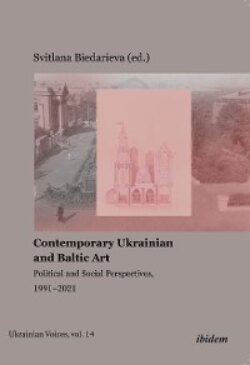Читать книгу Contemporary Ukrainian and Baltic Art - Группа авторов - Страница 11
На сайте Литреса книга снята с продажи.
Living and haunting memories
ОглавлениеThe difficult relationship between the past and the present, and thus also the future, can be described not only as traumatic but also as haunting—“the experience of the non-present in the living present, something that is over or past nonetheless lives on,” as the sociologist Avery F. Gordon (Gordon 2011, 6) has put it. She argues that “haunting is not about invisibility or unknowability per se, it refers us to what’s living and breathing in the place hidden from view: people, places, histories, knowledge, memories, ways of life, ideas.” (Gordon 2011, 3)
Such haunting, which alters the experience of being in linear time and the way one separates and sequences the past, present, and future, was reflected in an exhibition by Ieva Epnere titled Sea of Living Memories (2016).11 The inducement of the exhibition was the Crimean crisis that strongly resonated in the Baltic states in 2014, enhancing anxiety about a possible ghostly return of the past. However, the work mainly problematized the unwillingness to see that part of society, whose relationships with the socialist history are still too living, as they are the “implicated subjects” of this past—neither victims nor perpetrators, but rather participants in difficult histories and their social formations, not occupying a clear-cut role. (Rothberg 2019, 1)
How then are the changes in postsocialist space perceived by those for whom the Soviet period was not imposed by a foreign power; that is, those for whom it was a formative life experience? Epnere addressed this question in her work portraying and interviewing people whose lives were once spent in the restricted zone along the coast of the Baltic Sea where the Soviet army was stationed, as it was the Western external border of the USSR. The oral histories and vernacular memories of local Latvian inhabitants and the former military men of the town connected the individual stories with broader layers of memory, challenging and shifting homogenous narratives of history. In contrast with the interviews, in the central piece of the exhibition, the video installation titled Potom (2016; meaning “later” in Russian), this implication in the past was reflected through poetic contemplation about the present as life after the Soviet period, depicting a melancholic portrait of a Soviet naval officer who spends a spartan, disciplined life in an alienated place that seemingly belongs to a different time. The scenery of the video installation—a former Imperial Russian and Soviet naval base and the abandoned military fortifications at the Baltic Sea—enhanced the cinematic visuality, as if materializing the haunting past as “tangible and tactile as well as ephemeral and imaginary.” (Gordon 1997, 201)
A protagonist whose implication in the Soviet colonial and military past has continued long after the dissolution of the USSR was also portrayed in a work by Vika Eksta titled Conversations with Dad (2020). The work was made for the 2020 exhibition Difficult Pasts. Connected Worlds, which sought new sensibilities and reflexivities to deal with different commonly silenced subjects.12 While Epnere’s work featured an abstract figure, an outsider, Eksta’s work focused on her dad, a lively and ironic man whose memories of youth she insistently inquired after. Through their conversations, she confronted the silence about the past that has long cast a shadow, not only in the context of her family but also in a way that is characteristic of the post-Soviet condition. The memories the artist’s father was reluctant to return to were about the largely forgotten Soviet–Afghan War (1979–1989), which was the most brutal military conflict of the late Soviet period, killing thousands and leaving many more thousands physically and mentally wounded. Many young men were drawn into the conflict against their will, as they were assigned to the Soviet army, and thus, in a double way were involved in the colonial politics of the Soviet Union. In this work, conversation became the main medium to communicate the difficult past and process the memories that relate not only to the artist’s father, but also to the artist herself, as she has been troubled by his past through her family relationships and through so-called “postmemory,” which refers to the affective ways in which the traumatic experiences of parents and grandparents continue to live on in the following generations.13
These few examples give just a glimpse of the broad variety of complexities of the Soviet-period legacies and the ways artists have approached them over recent decades. Exploring contemporary social and political change, they increasingly reveal a critical distance and a separation from the Soviet past, or a change from “hot” to “cold” memory—that is, a no-longer living and affective (or hot) relationship to the past, but a more distant, detached (cold) re-cognition of the post-Soviet condition. (Weeks 2010, 67-68) They thereby continue to bring new nuanced understandings of entanglements of the past and present, suggesting more relational approaches or looking for alternatives that go beyond the dominant paradigms.
